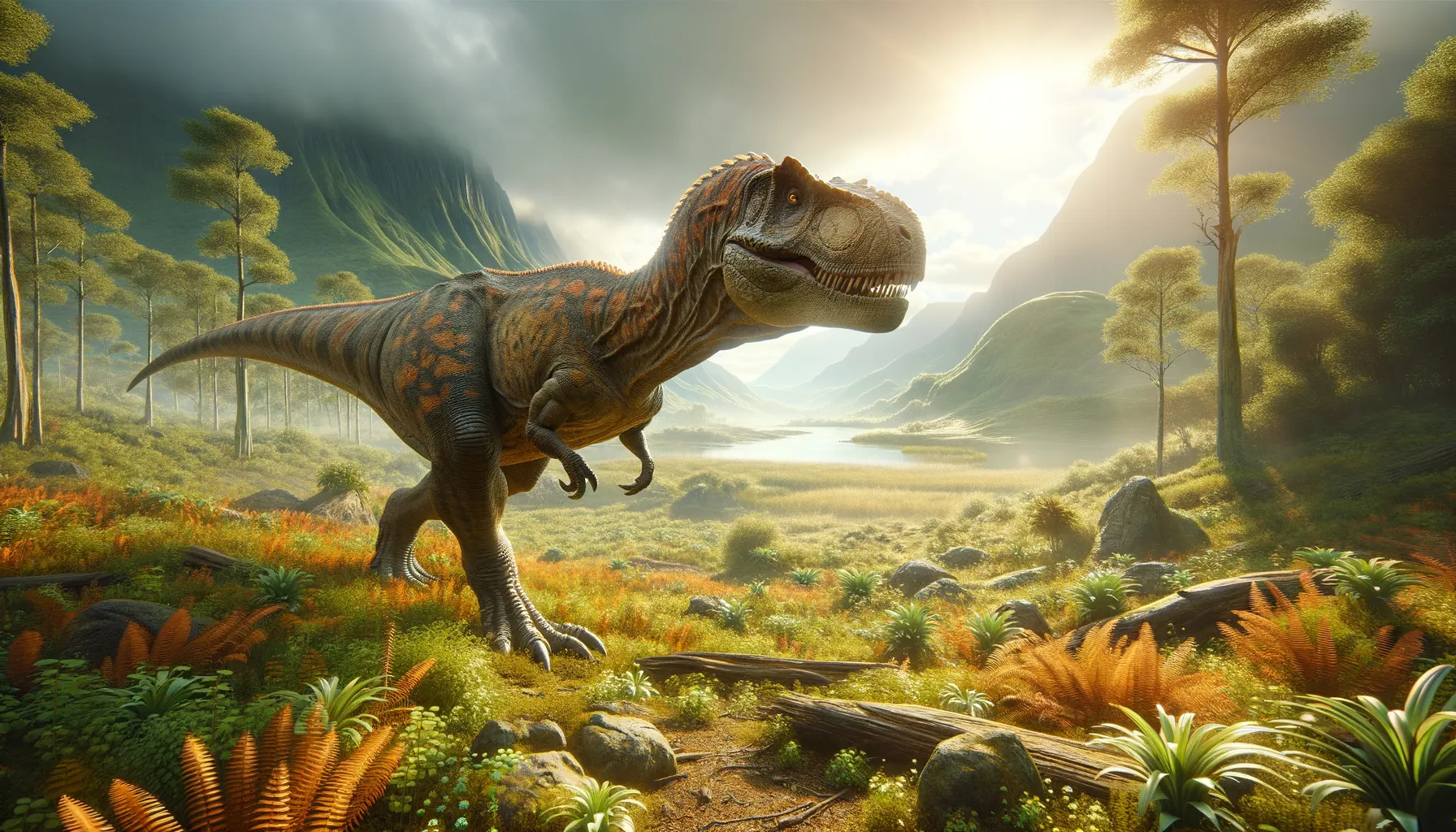
Leipsanosaurus
A swift and strong survivor of the ancient past.
Period
Cretaceous
Length
Measured up to 9 meters in length.
Height
Stood about 3 meters tall at the hip.
Weight
Estimated around 1,000 kilograms.
Leipsanosaurus was a formidable dinosaur inhabiting the lush Cretaceous landscapes. Known for its robust build and agility, it roamed in regions abundant with diverse flora. This dinosaur contributed significantly to the ecosystem, interacting with various other species. Its strong limbs and a keen sense of hearing made it adept at both hunting and evading predators. Leipsanosaurus provides valuable insights into dinosaur biodiversity and adaptability during its era.
Diet
Leipsanosaurus was primarily a carnivore, preying on smaller dinosaurs and reptiles. It was also known to scavenge, taking advantage of carcasses left by other larger predators to supplement its diet.
Hunting
It hunted using keen senses and strategic movement, often employing ambush tactics. This dinosaur relied on strong, muscular legs to deliver a quick burst of speed when pursuing prey.
Environmental challenges
Living during the Cretaceous period, Leipsanosaurus faced significant volcanic activity, which occasionally altered its habitat. Climate fluctuations meant periods of drought that posed a challenge for finding water and food. Competition with other predatory dinosaurs necessitated adaptability in its hunting methods to secure resources. Despite these challenges, it evolved resilient behavioral traits to survive.
Speed
Leipsanosaurus was a moderately fast runner.
Lifespan
Lived for approximately 20 to 30 years.
First discovery
First discovered in the late 20th century.
Fun Facts
- Leipsanosaurus is known for its unique name, which means 'missing lizard', owing to the mysterious scarcity of its fossils.
- Despite being elusive, scientists have pieced together that Leipsanosaurus lived during the late Jurassic period, about 150 million years ago.
- This dinosaur likely roamed the ancient landscapes of what is now Europe, moving through forests and open plains.
- Unlike many of its contemporaries, Leipsanosaurus is thought to have been a smaller-sized dinosaur, possibly not exceeding the length of a small car.
- Fossil evidence suggests that Leipsanosaurus had a herbivorous diet, munching on the plentiful plants of its time.
- Leipsanosaurus has sparked the imagination of paleontologists due to its enigmatic nature and the challenge of piecing together its life story.
- The discovery of Leipsanosaurus fossils has required international collaborations, reflecting its importance in understanding dinosaur history.
Growth and Development
Leipsanosaurus experienced rapid growth during its early years, requiring constant nourishment. It reached maturity at around 7 to 10 years, which was necessary for surviving competitive environments. Juveniles were vulnerable to larger predators, so they often stayed within the protective territories of adults. This dinosaur's development was marked by learning crucial survival skills early in life.
Habitat
Leipsanosaurus inhabited regions with dense vegetation and access to water sources. Its environment consisted of varied landscapes, from open plains to forested areas. The proximity to waterways provided essential hydration and attracted diverse prey. Seasonal migrations in search of food and suitable living conditions were common.
Interaction with other species
Leipsanosaurus shared its habitat with a multitude of other dinosaur species, some of which were competitors. It coexisted alongside large herbivores, sometimes scavenging their remains. Territorial disputes with other carnivores were frequent, leading to displays of dominance. Over time, it developed a niche that minimized direct competition for food.
Natural lifespan
Its natural lifespan was approximately 20 to 30 years.
Reproduction
Reproduction involved laying clusters of eggs in concealed nests, which both parents guarded vigilantly. Hatchlings were precocial, meaning they were relatively mature and mobile from birth while requiring parental protection. Parents often provided meat to their young until they were capable of hunting independently. This parental investment was crucial for juvenile survival in a predator-rich environment.
Social behaviour
Though generally solitary, Leipsanosaurus exhibited periods of social interaction during mating seasons. Temporary alliances were formed to defend against larger predators. It also showed a basic social hierarchy when juvenile groups were present, established through common displays of strength and skill. Communication involved vocalizations and physical gestures, particularly during confrontations or mating displays.
Fossil locations
Fossils of Leipsanosaurus have been predominantly found in North America, specifically in regions known for late Cretaceous sediments. Several specimens have been unearthed in Montana, providing significant insight into its structure and lifestyle. Additional finds in Canada suggest its adaptation to various habitats within this continent. These locations have helped piece together its migratory routes and ecological preferences.
